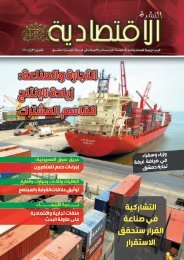SIGAR
2017-01-30qr
2017-01-30qr
You also want an ePaper? Increase the reach of your titles
YUMPU automatically turns print PDFs into web optimized ePapers that Google loves.
COUNTERNARCOTICS<br />
UNODC estimates that Afghanistan accounts for two-thirds of the global<br />
area under illicit opium cultivation. 802 <strong>SIGAR</strong> noted in its October 2014<br />
report that counternarcotics has largely fallen off the Afghan agenda of<br />
both the U.S. government and the international community. At the Brussels<br />
Conference in October, counternarcotics was barely addressed, though it is<br />
mentioned near the end of the Joint Communiqué where the international<br />
community reaffirms its commitment to reducing illegal production and<br />
trafficking of narcotics. The topic did not feature prominently in conference<br />
events, though it was a topic of the National Peace and Development<br />
Framework presented there. 803<br />
During the quarter, INL participated in three international working<br />
group meetings under the Paris Pact framework on regional cooperation,<br />
drug demand reduction and interdiction of precursor chemicals. 804 During<br />
the meetings, Paris Pact partner countries updated the international community<br />
on trafficking matters and changes in their domestic drug markets,<br />
and discussed a number of challenges and best practices in counternarcotics<br />
efforts, particularly in developing and implementing cross-border law<br />
enforcement training programs. 805<br />
Drug-Demand Reduction<br />
U.S.-funded national surveys on urban and rural drug use, conducted in<br />
2012 and 2014 respectively, estimate that 2.5–3 million Afghans—nearly 11%<br />
of the country’s population—are drug users. 806 The country lacks sufficient<br />
treatment centers to address the growing drug-abuse problem, particularly<br />
for women and children. The first drug treatment center in Kabul for<br />
women and children opened this quarter and it can house 120 patients. This<br />
center is unique in treating women and children with psychologists working<br />
alongside doctors. The Ministry of Public Health (MOPH) estimates that<br />
of the three million addicts, one million are women and more than 100,000<br />
are children. 807<br />
Since 2015, INL has transitioned 28 of the 86 U.S.-funded drug treatment<br />
centers to the responsibility of the MOPH. Transition of 21 treatment<br />
centers for women and children scheduled for January 2017 has been suspended<br />
while INL, the MOPH, the Ministry of Counter Narcotics (MCN),<br />
and the NGOs renegotiate the transition plan. 808 INL held meetings with<br />
stakeholders in December 2016 to revise the transition plan based on issues<br />
raised at the May drug-demand reduction working group meeting. MOPH<br />
raised concerns about their ability to contract with the NGOs currently<br />
running the centers in the initial timeframe set out in the transition plan.<br />
INL also had concerns about the firing of clinical staff from transitioned<br />
centers. 809 The remaining treatment centers will transition by the end of<br />
2019. INL reduced funding to all facilities (including the MOPH portfolio of<br />
28 centers) by approximately 20% in 2015, another 15% in 2016 and another<br />
25% in 2017. 810<br />
The Paris Pact: The partnership of several<br />
countries and international organizations<br />
to combat illicit opium traffic from<br />
Afghanistan. It originated at a ministers’<br />
meeting in Paris in 2003 on Central Asian<br />
drug routes. The pact aims to reduce<br />
opium-poppy cultivation, production<br />
and global consumption of heroin and<br />
other opiates, and to establish a broad<br />
international coalition to combat illicit<br />
traffic in opiates.<br />
Precursor chemical: a substance that may<br />
be used in the production, manufacture,<br />
and/or preparation of narcotic drugs and<br />
psychotropic substances.<br />
Source: Paris Pact website, “What is it?” www.paris-pact.net,<br />
accessed 7/16/2014; UNODC, “Multilingual Dictionary of<br />
Precursors and Chemicals,” 2009, viii.<br />
REPORT TO THE UNITED STATES CONGRESS I JANUARY 30, 2017<br />
189







